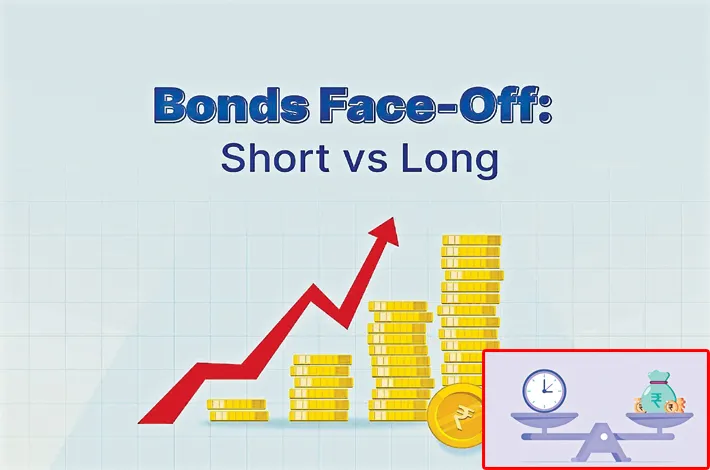A short take on long term bonds
25-10-2025 12:00:00 AM

World’s oldest bond
- A 400 year old Dutch bond will mature for payment this month end.
- It is the world’s oldest active perpetual bond (called Preps or Forever Bonds) and was issued by Dutch Water Authority in December 1624 for 1,200 Carolus Guilders (former Dutch currency).
Main features:
- Rank subordinate to all other debts, but is higher than both preference and common equity capital shares.
- Loans can be raised by the holders against their Prep holdings.
Few examples of long term bonds:
- 4% interest rated bonds issued by Canadian Pacific Railway in 1883 to mature in 2883.
- A subsidiary of National Bank of New York issued 7.21% 1,000-year bonds in year 1997
- 100-year tenure bonds are common and are known as “century bonds.” Eg:Coca Cola issued 7.5% 100-year bonds in year 1993.
Advantages:
- Long term bonds can be investment avenues even for households if they offer attractive coupon rates and tax benefits.
- At the same time, periodical interest income should be regular and attractive enough.
AT-1 bonds are reckoned as equity and in the instances of restructuring or insolvency, these bonds can be written off. Not truly perpetual, but bonds of ultra long term are issued which are considered akin to Preps. While 1,000-year bonds are few, 100-year tenure bonds have been many. These are called Century Bonds
October 2025 will see interest payment on a 400-years old Dutch Bond. It is the world’s oldest active perpetual bond (called Preps or Forever Bonds). This Prep was issued by Dutch Water Authority (Hoogheemraadschap Lekdijk Bovendams) in Netherlands in December 1624 for 1,200 Carolus Guilders (former Dutch currency). The authority issued 50 Preps and raised 23,000 Guilders to meet repairs of Lek River near Utrecht city. Regardless of change in the Water Authority, interests have been paid since then. Interest payments are directly made to the bearers as Preps are bearer instruments and can be freely transferred to anyone. These are liquid and marketable.
They rank subordinate to all other debts, but above preference and common equity share capital. Loans can be raised by the holders against their Prep holdings. In year 2018, this Prep entered Guiness Records as the world’s oldest active perpetual bond. After 300 years, a Dutch-American Banker bought this Prep and donated to New York Stock Exchange which has been receiving interest since then. Other Prep issuances include Consols (consolidated annuities) issued by the UK Government to manage debt after world war. Consols have no maturity, but issuer has discretion of redemption. As per the market conditions, UK Govt redeemed high interest Consols and issued new Consols.
Accordingly, the coupon on Consols ranged between 2.5% and 4%. The first issuance of Consols was in year 1751 and last issuance was in year 1932. By year 2015, UK Govt had redeemed all the Consols. Consols were also issued by Canadian Pacific Railway. As these bonds were issued during gold standard regime, they had a clause to pay interest in gold coins. These Consols were secured and had AA credit rating. Some of these Consols are still outstanding and are disclosed in issuer’s annual reports. Not many Preps are known to have been issued. However, in due course, financial institutions started mobilizing capital by issuing Additional Tier-1 (AT-1) bonds. Like Consols, AT-1 bonds do not have maturity, but issuer has right to redeem.
AT-1 bonds are reckoned as equity and in the instances of restructuring or insolvency, these bonds can be written off. Not truly perpetual, but bonds of ultra long term are issued which are considered akin to Preps. For instance, 4% 1,000-year bonds are issued by Canadian Pacific Railway in year 1883 to mature in year 2883. Safra Republic, subsidiary of National Bank of New York had issued 7.21% 1,000-year bonds in year 1997. While 1,000-year bonds are few, 100-year tenure bonds have been many. These are called Century Bonds. Coca Cola of USA issued 7.5% 100-year bonds in year 1993. In year 1997 Walt Disney of USA issued 7.55% 100-year bonds (bynamed as Sleeping Beauties). In year 2010, Mexico Government issued 6.1% 100-year bonds. Oxford University issued 100-year bonds in year 2017. Austrian Government issued 2.17% 100-year bonds (called as Bet of the Century) in year 2017.
In year 1997, Reliance company issued 100-year bonds with coupon of 10.6% and mobilized $100 million and issued few more series and mobilized a total of $614 million (bynamed as Yankee Bonds). These Yankee bonds mature in year 2046, but bond holders can exercise put option in August 2026. Recently, in year 2024 China issued 100-year bonds with 2.5% coupon. Worldwide until now, 25 entities issued century bonds. JP Morgan, Merryl Lynch, and Goldman Sachs have actively arranged Preps and long-term bonds. Pension funds, insurance companies, endowments, and banks have been investing in Preps and long-term bonds for safety, perennial interest earnings, and for liquidity.
Long Term Bonds can be investment avenues even for households provided they offer attractive coupon, tax benefits, security, sovereign endorsement, and put options. When compared with traders and institutional investors, liquidity preference for household investors could be lower. However, periodical interest income should be regular and attractive enough for the investors to stay put. The declining savings and capital formation may reverse with investments in Long Term Bonds.
- Dr. Kishore Nuthalapati








